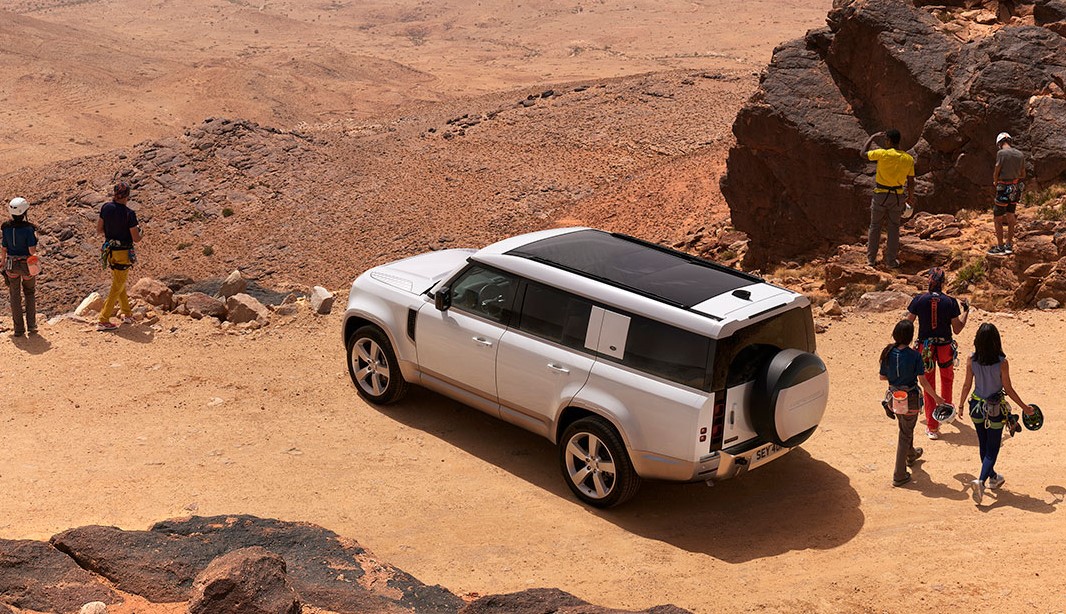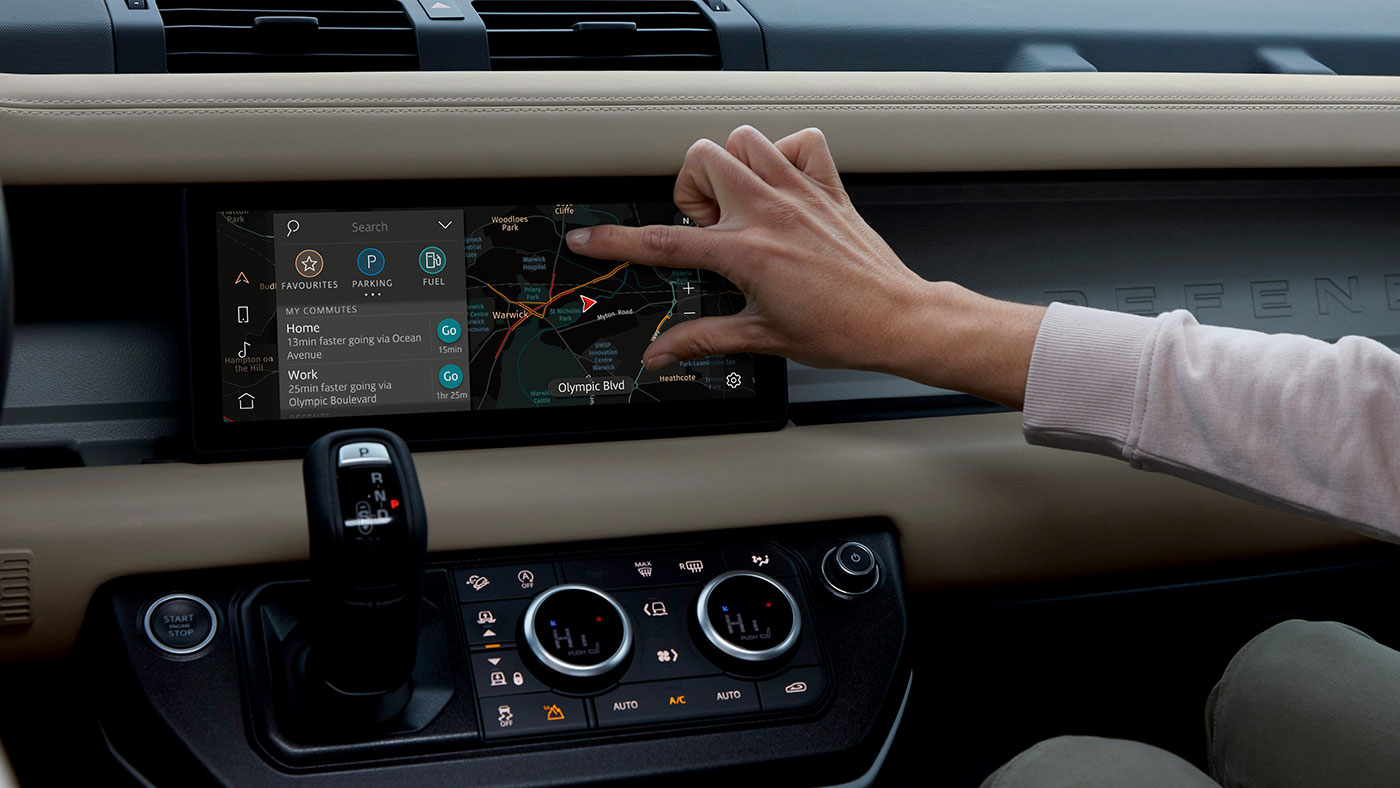

Land Rover Defender: Separating Facts From Myths
Oct 03, 2023 |
For decades, the Land Rover Defender has epitomised British automotive engineering. Known for its ruggedness and adaptability, the Defender has cultivated a devoted following among off-road enthusiasts and adventurers. Yet, recently, questions have arisen regarding its reliability, with some citing recurring issues and costly repairs.
To gauge the dependability of the Land Rover Defender, we must delve into several factors, including build quality, longevity, and maintenance. Additionally, it's essential to realise that the Defender has evolved immensely since its inception in 1948, and ideas about dependability in the past may not be so relevant nowadays.
History And Reputation Of Land Rover Defender
The Land Rover Defender, a British off-road vehicle, has been produced since 1983. Its roots trace back to the Series I Land Rover introduced in 1948, which evolved through Series II and Series III models before becoming the Defender. It is designed for durability and versatility and has military, agriculture, and humanitarian applications.
Over the years, the Defender has garnered acclaim for its ruggedness and off-road prowess. Off-road enthusiasts and adventurers favour it for conquering challenging terrains, while its iconic boxy design and timeless appeal make it a sought-after collectable.
However, criticisms about its reliability have emerged. Some owners report electrical, engine, and suspension problems, often stemming from the vehicle's age, exposure to harsh environments, and complex mechanical systems.
Despite these challenges, the Defender's loyal following remains committed, with many attesting to its reliability and robustness. At the same time, independent Land Rover spare parts suppliers and communities offer solutions for common issues and performance enhancements.
Notably, in 2016, Land Rover ceased production of the original Defender but introduced a new generation in 2020. This iteration addresses previous reliability concerns, integrating modern technology and improvements while retaining its iconic design and off-road capabilities, further enhancing its reputation as a dependable, capable off-roader.

Performance And Off-Road Capabilities
Engine and Transmission: The Land Rover Defender offers a range of Ingenium engines, from a 2.0-litre turbocharged petrol to a 3.0-litre straight-six mild-hybrid petrol, coupled with an 8-speed automatic transmission for smooth shifts and optimised fuel efficiency.
Suspension and Handling: Equipped with an advanced independent double-wishbone front suspension and integral link rear suspension, the Defender excels in ground clearance and wheel articulation for off-roading.
It boasts features like Adaptive Dynamics, Electronic Air Suspension, and Terrain Response 2, adapting to various driving conditions for optimal off-road performance.
Towing Capacity: The Land Rover Defender impressively tows up to 3,720 kilograms, aided by Advanced Tow Assist, simplifying trailer reverse manoeuvres through a rearview camera and intuitive software.
Build Quality And Durability
Chassis and Bodywork: The Defender's chassis, constructed from high-strength steel, offers a robust foundation for off-road prowess. Galvanised steel is used for body panels, ensuring corrosion resistance and longevity.
Interior Materials and Finish: Inside the Defender, premium materials like leather and high-quality plastics combine comfort and durability. Attention to detail, such as sturdy stitching and trim, ensures longevity. The interior harmoniously blends rugged and modern elements while enabling easy cleaning and maintenance.
The Land Rover Defender's build quality and durability testify to its iconic reputation as a reliable, rugged off-roader. Its robust chassis, corrosion-resistant bodywork, and quality interior materials contribute to a vehicle built to withstand harsh conditions and the test of time.
Common Issues And Reliability Concerns
Electrical Problems: Defenders may encounter common electrical issues like faulty switches, failing alternators, and dimming headlights, often due to age-related wear.
Mechanical Issues: Mechanical challenges, such as oil leaks in various areas, worn-out bushings, and rust in older models, may affect the Defender's reliability. Regular maintenance and addressing these issues are essential to extend the vehicle's life and dependability.

Cost Of Ownership
Maintenance and Repairs: The cost of owning a Land Rover Defender depends on factors like age, model, and usage. On average, a minor service covering oil changes and filter replacements will cost around 850 AED, while a major service will likely cost 2,500 AED. Owners should be aware of common problems and address them promptly to prevent significant repair expenses. Sourcing high-quality replacement parts and regular Land Rover servicing by reputable specialists is vital.
Fuel Economy and Emissions: Fuel consumption varies based on factors such as engine type, driving style, and terrain. Diesel models generally offer better fuel economy (around 27-30 mpg) than petrol models (approximately 20-25 mpg). Newer Defenders adhere to stringent EU emissions regulations, emitting approximately 262g/km of CO2. Older, non-compliant engines may incur higher road taxes and congestion charges.
Safety And Crash Test Ratings
The Land Rover Defender prioritises safety with advanced features like Electronic Stability Control (ESC), Autonomous Emergency Braking (AEB), Lane Keep Assist (LKA), and Blind Spot Assist.
These systems and a sturdy body structure earn the Defender a five-star Euro NCAP rating for adult and child occupant protection and vulnerable road user protection.
Competitor Comparison
The Land Rover Defender competes with vehicles like the Toyota Land Cruiser, Jeep Wrangler, and Mercedes-Benz G-Class. Each has unique strengths and drawbacks, making it essential for buyers to prioritise their specific needs when choosing among these options.
Conclusion
In conclusion, the Land Rover Defender has earned its reputation as a reliable and versatile vehicle tailored for off-road adventures.
Its enduring durability and straightforward maintenance have made it a beloved choice among many enthusiasts. However, prospective buyers should approach their purchase with a balanced perspective, acknowledging its strengths and weaknesses.
Reliability
Over the years, the Land Rover Defender has been on a remarkable journey, evolving from its origins as a rugged workhorse to a modern on and off-road icon. It has garnered a loyal following due to its proven reliability in navigating the most challenging terrains and enduring harsh conditions.

Versatility
One of the Defender's most commendable traits is its versatility. Beyond its off-road prowess, it seamlessly transitions into a practical everyday vehicle, making it suitable for urban and rural lifestyles. Whether ferrying the family through city traffic or carrying supplies on a remote expedition, the Defender remains a versatile companion.
Acknowledging Shortcomings
However, a prospective Defender owner should know the vehicle's imperfections. The Defender, particularly older models, may exhibit common issues like electrical quirks or occasional mechanical hiccups. While these challenges might arise, they can be addressed with regular maintenance and timely attention.
Maintenance Is The Key
Diligent maintenance is the key to ensuring that your Defender remains a dependable companion for years. Regular Land Rover servicing by experienced professionals, adhering to recommended maintenance schedules, and promptly addressing emerging issues can significantly prolong the vehicle's life and reliability.
Issues such as oil leaks, worn-out suspension components, and rust, especially in older models, should be addressed proactively. By doing so, you not only ensure the longevity of your Defender but also prevent these issues from snowballing into more significant and costly repairs.
The Defender's Legacy
The Land Rover Defender is an evergreen companion for those who appreciate its unique blend of ruggedness and versatility. While it may have its quirks and challenges, these can be tamed with care and attention.
With regular maintenance and a proactive approach to addressing common issues, the Defender can continue to be a reliable partner on your off-road adventures and everyday journeys, faithfully serving you for many years.

JOINING OUR MAILING LIST
+971 56 682 2025

